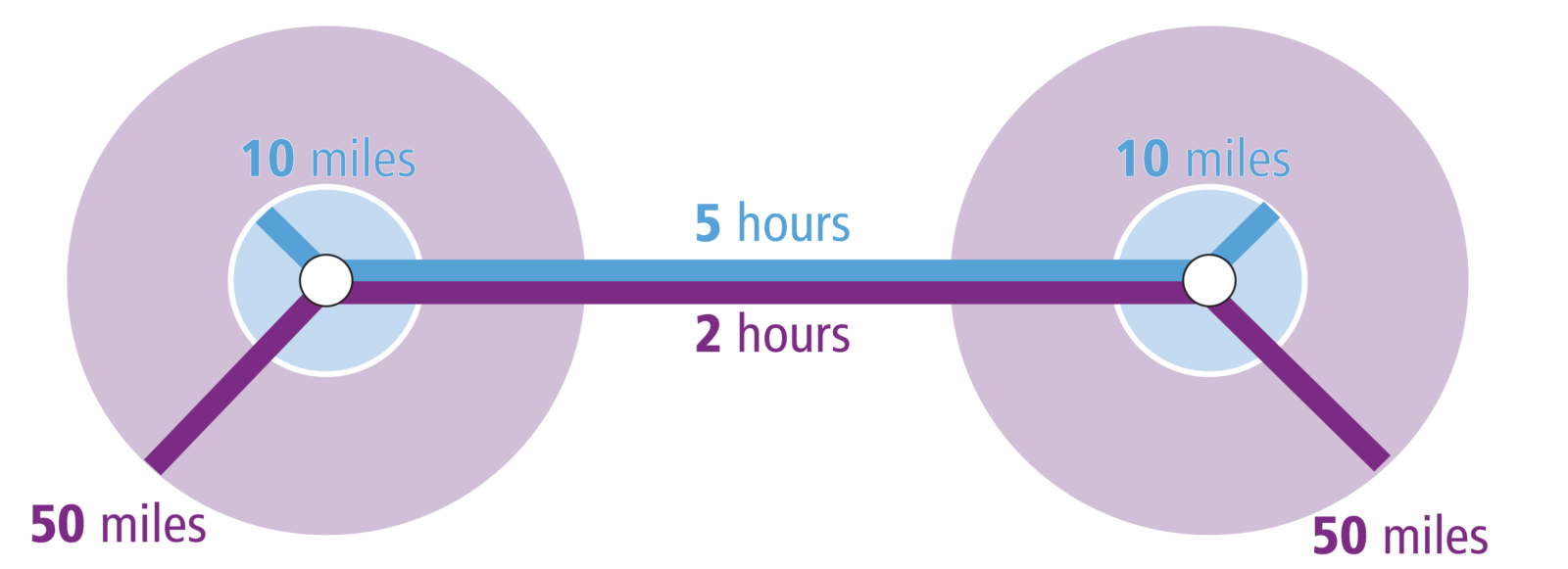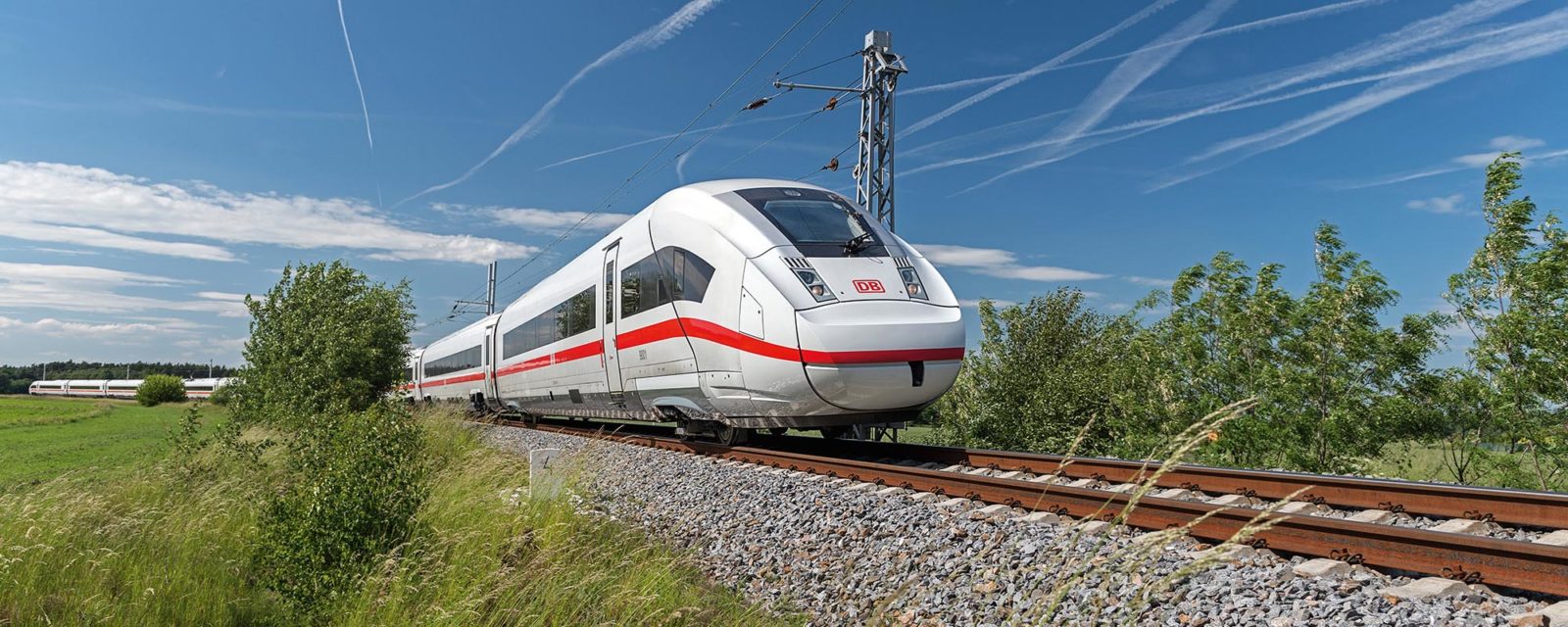Caltrain Completes Electrification Between San Francisco and San Jose Caltrain, with partners Pacific Gas and Electric Company (PG&E) and Balfour Beatty, has completed energization of the 51-mile corridor between San Francisco and San Jose. Caltrain can now begin...

High-speed trains dramatically shorten travel time between stations. This effectively expands the areas that each station can serve.
Speed is just the first ingredient
Taking a train makes more sense if the travel time is competitive with flying or driving. What exactly “competitive” means depends on the distance and type of trip. The faster the train, the more sensible it is for more people in more places.
For a trip from a small town to a big city, a trip time comparable to driving is sufficient, especially if trains are reliable, frequent and comfortable.
For trips between two major metros, travel to the train station must be taken into account. If your starting or ending points are far from the city center, the train trip itself must be faster to make up for the time required to get to the station. For most trips in the Midwest, such as Chicago to St. Louis or Chicago to Minneapolis, this means the train trip must be 3 hours or less.
Frequent trains are fast trains
High speeds alone do not make an effective passenger rail network. The train needs to depart when you’re ready to go. For big cities, this means trains should depart every hour. In smaller towns, you need at least four trains each day. Time spent waiting for the train is perceived as part of the trip time, so more frequent trains effectively reduce travel times.
A variety of departures throughout the day makes the train useful for different types of trips. Business travelers may need to leave early in the morning or late in the evening, while leisure travelers probably want to ride in the middle of the day. Frequent trains also make it easier to connect with other trains, planes and buses.
Higher speeds allow for higher frequencies, because the same number of trains and crews can make more trips over the course of the day.
Reliability
The train is only an attractive option if it arrives and departs when you expect it to. Luckily, the same investments that allow higher speeds and frequencies also make trains more reliable.
Trains can often proceed safely through weather that grounds air traffic and brings highways to a halt.
Location
The same train can serve stations in a dense downtown, a leafy suburb or a rural town, putting you much closer to your actual starting or ending point than the airport on the edge of town.
Price and amenities
Trains offer more space (and time) to relax, work or socialize. Just like planes, a train can offer both low-cost seating and first-class accommodations.
Connectivity
Successful high-speed trains connect with other forms of transportation: local trains and buses, intercity buses, and major airports.
Serve as many markets and as many political constituencies as possible
Design each investment to serve as many people as possible, and the neccessary political support will follow. This seems simple, but railroad planning in the U.S. is stymied by fragmented jurisdictions and funding streams. Decisions about commuter trains, regional trains, national trains and freight trains all happen separately. People’s travel needs are not neatly divided into these categories, and as a result, many potential trips are missed by planning models.
We need a new mindset and planning framework that recognizes that each infrastructure investment can serve multiple purposes and that each train can serve many market segments.
The Latest from HSRA
Our Latest Blog Posts
Check out the latest news, updates, and high speed rail insights from our blog!


